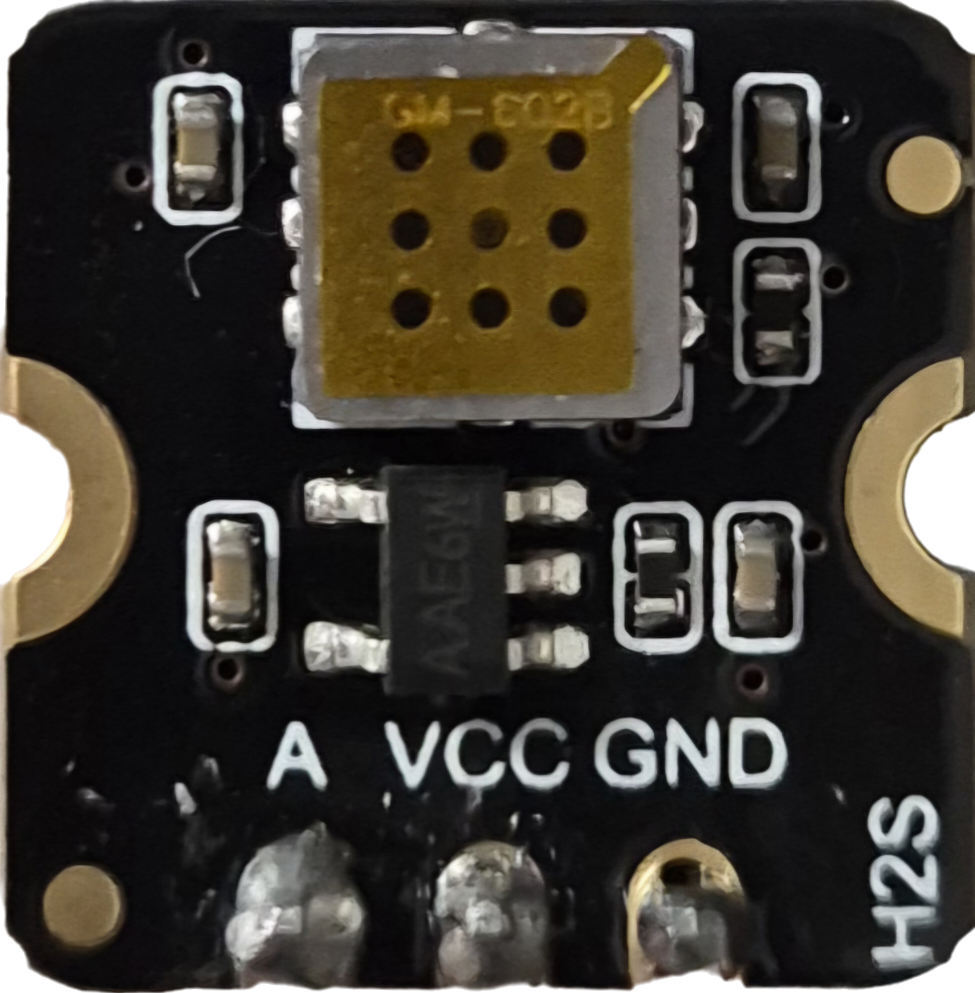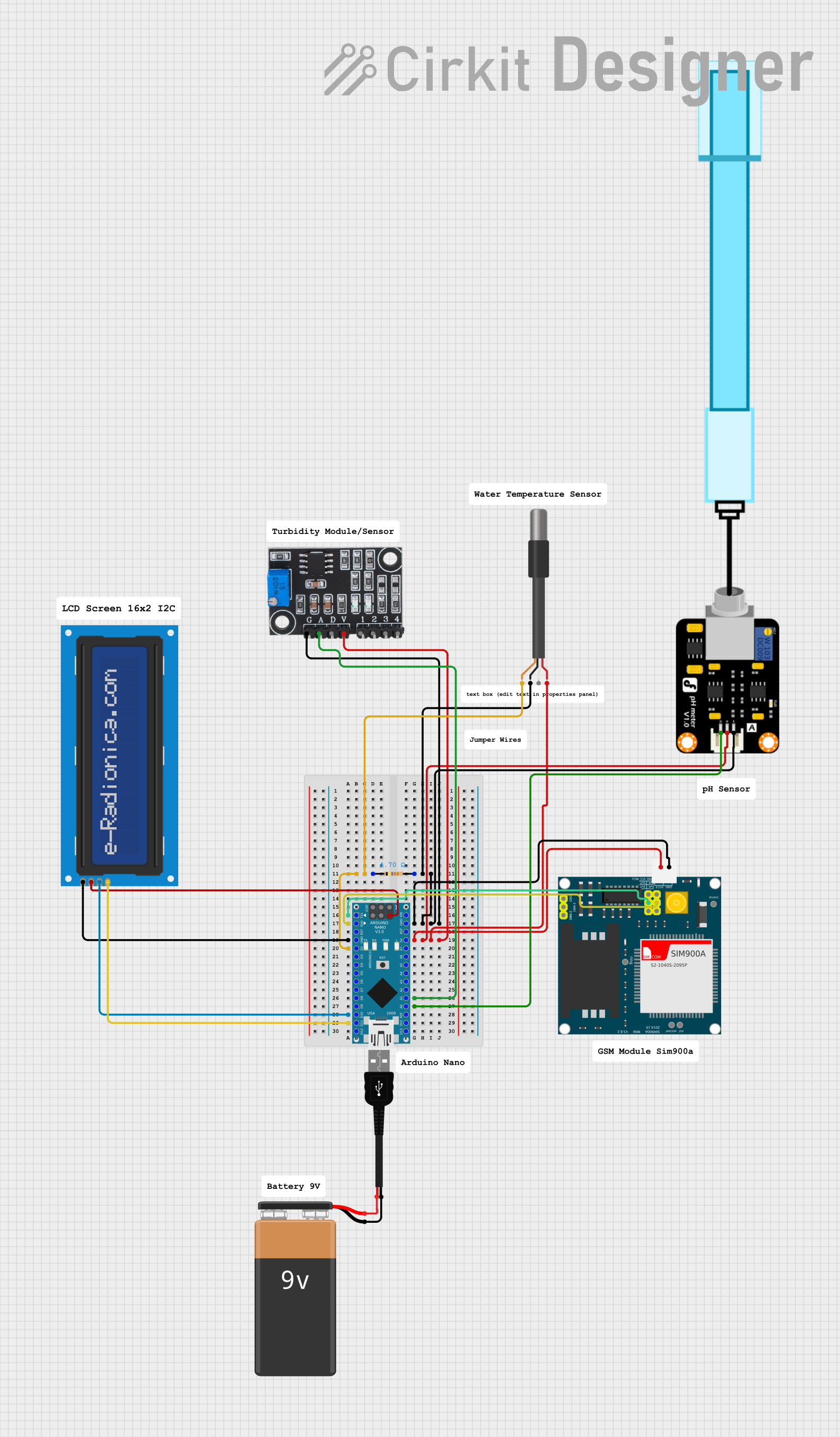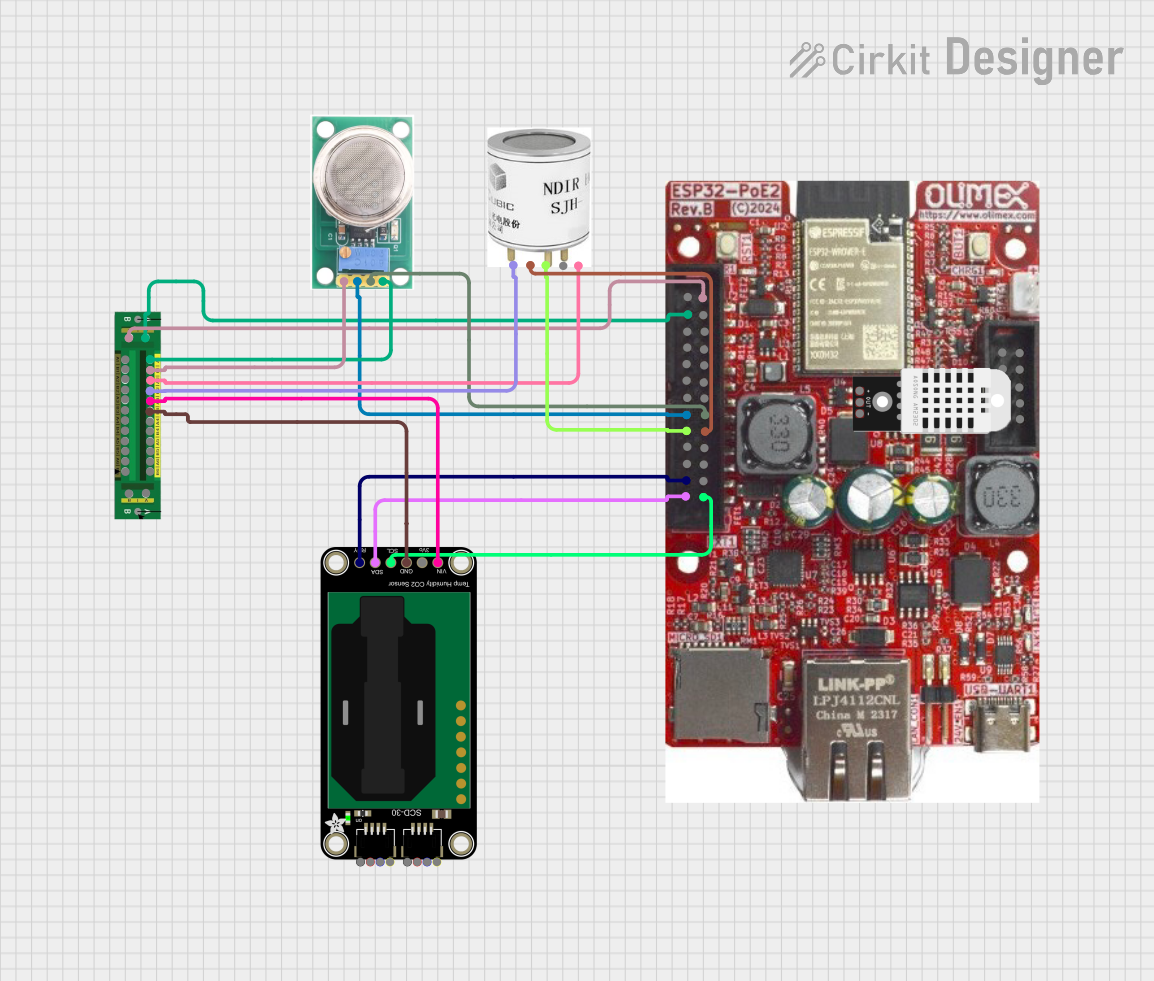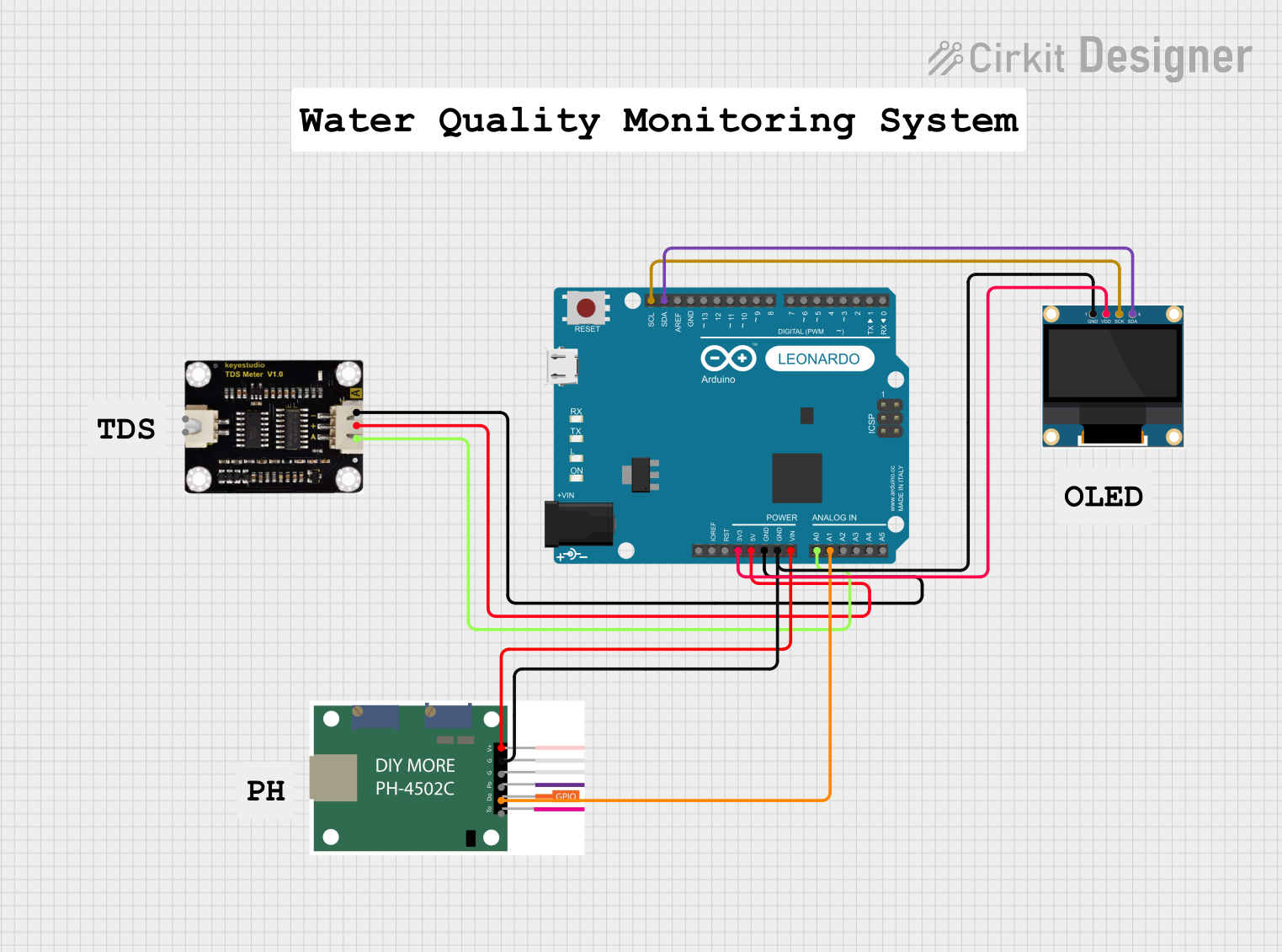
How to Use H2S Sensor: Examples, Pinouts, and Specs

 Design with H2S Sensor in Cirkit Designer
Design with H2S Sensor in Cirkit DesignerIntroduction
The H2S Sensor (SEN0568) by DFRobot is a high-performance device designed to detect the presence of hydrogen sulfide (H2S) gas in the environment. Hydrogen sulfide is a toxic and flammable gas commonly found in industrial settings, making this sensor an essential tool for safety monitoring and environmental analysis. The sensor provides reliable and accurate measurements, ensuring timely detection of H2S gas to prevent hazardous situations.
Explore Projects Built with H2S Sensor

 Open Project in Cirkit Designer
Open Project in Cirkit Designer
 Open Project in Cirkit Designer
Open Project in Cirkit Designer
 Open Project in Cirkit Designer
Open Project in Cirkit Designer
 Open Project in Cirkit Designer
Open Project in Cirkit DesignerExplore Projects Built with H2S Sensor

 Open Project in Cirkit Designer
Open Project in Cirkit Designer
 Open Project in Cirkit Designer
Open Project in Cirkit Designer
 Open Project in Cirkit Designer
Open Project in Cirkit Designer
 Open Project in Cirkit Designer
Open Project in Cirkit DesignerCommon Applications and Use Cases
- Industrial safety monitoring in chemical plants, refineries, and wastewater treatment facilities.
- Environmental monitoring for detecting H2S emissions.
- Gas detection systems in confined spaces.
- Educational and research projects involving gas sensing technologies.
Technical Specifications
The following table outlines the key technical details of the H2S Sensor (SEN0568):
| Parameter | Value |
|---|---|
| Manufacturer | DFRobot |
| Part ID | SEN0568 |
| Detection Gas | Hydrogen Sulfide (H2S) |
| Detection Range | 0–100 ppm |
| Operating Voltage | 3.3V–5.5V |
| Output Signal | Analog voltage |
| Response Time | ≤30 seconds |
| Recovery Time | ≤60 seconds |
| Operating Temperature | -20°C to 50°C |
| Operating Humidity | 15%–90% RH (non-condensing) |
| Power Consumption | ≤0.5W |
| Dimensions | 32mm x 22mm |
Pin Configuration and Descriptions
The H2S Sensor (SEN0568) has a simple pinout for easy integration into circuits. The pin configuration is as follows:
| Pin | Name | Description |
|---|---|---|
| 1 | VCC | Power supply input (3.3V–5.5V) |
| 2 | GND | Ground connection |
| 3 | AOUT | Analog output signal proportional to H2S gas level |
Usage Instructions
How to Use the H2S Sensor in a Circuit
- Power the Sensor: Connect the VCC pin to a 3.3V or 5V power source and the GND pin to the ground of your circuit.
- Read the Analog Output: Connect the AOUT pin to an analog input pin of a microcontroller (e.g., Arduino UNO) to read the sensor's output voltage.
- Calibrate the Sensor: Allow the sensor to warm up for at least 24 hours before taking measurements to ensure accurate readings.
- Interpret the Output: The analog output voltage is proportional to the concentration of H2S gas. Use the sensor's datasheet to map the voltage to the corresponding gas concentration.
Important Considerations and Best Practices
- Avoid Exposure to High Humidity: Prolonged exposure to high humidity or condensation can damage the sensor.
- Prevent Contamination: Keep the sensor away from dust, oil, and other contaminants that may affect its performance.
- Use in Well-Ventilated Areas: Ensure proper ventilation to avoid sensor saturation in high H2S concentrations.
- Handle with Care: The sensor is sensitive to physical shocks and vibrations, which may affect its accuracy.
Example Code for Arduino UNO
Below is an example code to interface the H2S Sensor (SEN0568) with an Arduino UNO:
// H2S Sensor (SEN0568) Example Code
// This code reads the analog output of the H2S sensor and prints the
// corresponding voltage to the Serial Monitor.
const int sensorPin = A0; // Connect the AOUT pin of the sensor to Arduino A0
void setup() {
Serial.begin(9600); // Initialize serial communication at 9600 baud
pinMode(sensorPin, INPUT); // Set the sensor pin as input
}
void loop() {
int sensorValue = analogRead(sensorPin); // Read the analog value from the sensor
float voltage = sensorValue * (5.0 / 1023.0); // Convert the value to voltage
// Print the voltage to the Serial Monitor
Serial.print("Sensor Voltage: ");
Serial.print(voltage);
Serial.println(" V");
delay(1000); // Wait for 1 second before the next reading
}
Troubleshooting and FAQs
Common Issues and Solutions
No Output Signal:
- Cause: Incorrect wiring or insufficient power supply.
- Solution: Verify the connections and ensure the power supply voltage is within the specified range (3.3V–5.5V).
Inaccurate Readings:
- Cause: Sensor not calibrated or exposed to contaminants.
- Solution: Allow the sensor to warm up for 24 hours and ensure it is clean and free from dust or oil.
Slow Response Time:
- Cause: Operating in extreme environmental conditions.
- Solution: Ensure the sensor is used within the specified temperature and humidity range.
Sensor Saturation:
- Cause: Exposure to very high concentrations of H2S gas.
- Solution: Ventilate the area and allow the sensor to recover.
FAQs
Q1: Can the sensor detect gases other than H2S?
A1: No, the sensor is specifically designed to detect hydrogen sulfide (H2S) gas and may not provide accurate readings for other gases.
Q2: How often should the sensor be calibrated?
A2: The sensor should be calibrated periodically, depending on the application and environmental conditions. Refer to the manufacturer's guidelines for calibration intervals.
Q3: Can the sensor be used outdoors?
A3: Yes, but ensure it is protected from direct exposure to rain, extreme humidity, and dust to maintain accuracy and longevity.
Q4: What is the lifespan of the sensor?
A4: The sensor's lifespan depends on usage and environmental conditions. Under normal conditions, it can last several years with proper care and maintenance.